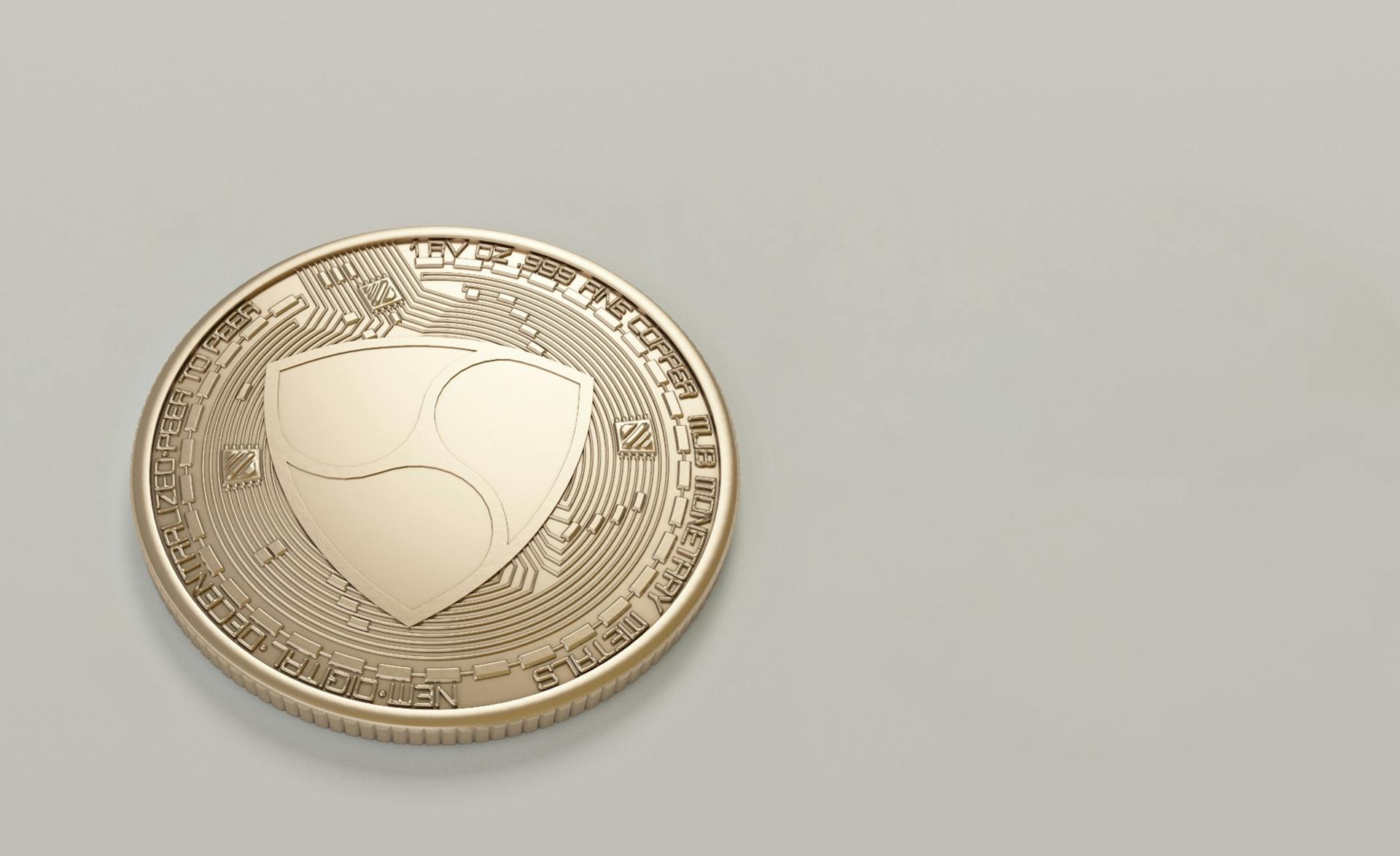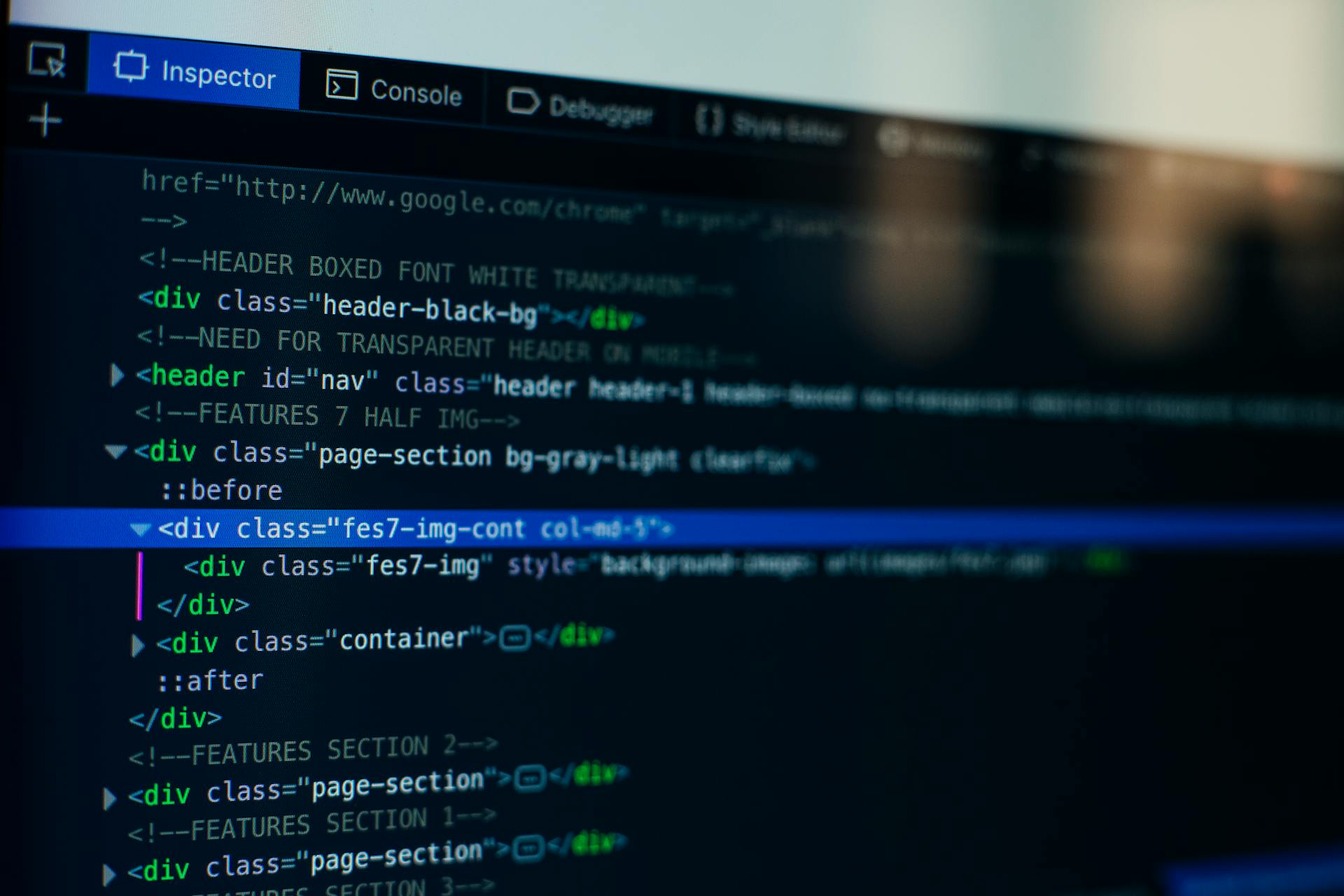
Smart contract development is a complex process that requires careful planning and execution. It involves creating a self-executing contract with the terms of the agreement written directly into lines of code.
To begin, you need to define the problem you're trying to solve and identify the key stakeholders involved. This will help you determine the scope of your project and the requirements for your smart contract.
A clear and well-defined problem statement is essential for creating a successful smart contract. It helps you focus on the most critical aspects of the contract and avoid unnecessary complexity.
The development process typically involves several stages, including design, development, testing, and deployment. Each stage requires a high level of attention to detail and a deep understanding of the underlying technology.
What Are Smart Contracts?
Smart contracts are self-executing programs that automatically enforce the terms of an agreement when certain conditions are met. They're like digital vending machines, but instead of dispensing snacks, they release assets or trigger actions.

Smart contracts are based on blockchain technology, which provides a secure and transparent way to record and verify transactions. This allows for trustless interactions between parties, without the need for intermediaries.
Smart contracts can automate a wide range of tasks, from simple payment transfers to complex business logic. They're often used in supply chain management, real estate, and finance.
The code for a smart contract is written in a programming language, such as Solidity, and is deployed on a blockchain network, such as Ethereum. This makes it possible to execute the contract automatically, without the need for human intervention.
Benefits and Applications
Smart contracts offer numerous benefits, including automation, which eliminates the need for intermediaries and reduces errors. This results in significant cost savings, with investment banks alone potentially saving $8 billion per year.
Automation also increases accuracy and speed, with smart contracts executing actions automatically once prerequisites are met. This ensures that all parties involved are on equal terms, and cheating or manipulation is impossible.

One of the key benefits of smart contracts is their transparency, with all terms and conditions visible on the blockchain for everyone to see. This ensures that the terms can't be refuted, and trust is fostered in decentralized applications.
Smart contracts also eliminate the need for third-party involvement, reducing the need for intermediaries and expenses related to errors. This results in quick and efficient operations, with all tasks executed by the system and controlled and recorded by it.
In addition, smart contracts are self-executable, with transactions carried out only when agreed conditions are met or fulfilled. This makes the contract enforceable without any need for litigation or manual enforcement by the authorities.
A unique perspective: Contract Agreement Payment Terms
Smart Contract Development Process
Developing a smart contract involves several steps, which can be broken down into manageable tasks. To create an Ethereum smart contract, you'll need to follow a specific process.
The process begins with writing the smart contract code using Solidity, the programming language for Ethereum smart contracts. This involves defining the contract's variables, functions, and events.

Once the code is written, it needs to be compiled into bytecode that can be understood by the Ethereum Virtual Machine (EVM). The Solidity compiler (solc) is commonly used for this step, making it a crucial tool in the development process.
After compiling the code, it's essential to test the smart contract to ensure it functions as expected. This involves creating comprehensive test cases to validate the behavior of individual functions and ensure proper interaction between different parts of the contract.
Concept
Developing a smart contract requires a clear understanding of its concept. This involves defining the objectives, terms, and actions that the contract will execute.
The first step in creating a smart contract is to articulate its fundamental goals and features. This clarity will enhance precision during the coding process, as seen in the example of a property sale between Party X and Party Y.
To create a smart contract, you need to consider the potential scenarios that may arise during its execution. In the property sale example, there are three possible outcomes: the parties fulfill the contract, X tries to pay less than the agreed amount, or Y fails to deliver the key within the specified time.
Check this out: Joint Venture Property Development

Here are the three potential scenarios that a smart contract can facilitate:
By defining the concept of the smart contract, you'll be able to write a precise and effective contract that meets your goals. This clarity will also ensure that the contract's coding process is smoother and more efficient.
Our Approach
Our approach to smart contract development involves several key steps. We've distilled it down to six essential steps that ensure seamless precision and effectiveness.
Developing an Ethereum smart contract involves several steps, which are the following: writing the contract's code, compiling it into bytecode, and deploying it on the blockchain.
You can write the smart contract code using Solidity, the programming language for Ethereum smart contracts. Define the contract's variables, functions, and events.
Once the code is written, compile it into bytecode that can be understood by the Ethereum Virtual Machine (EVM). The Solidity compiler (solc) is commonly used for this step.
The final step in the setup phase is deploying the developed smart contracts and the blockchain application. This denotes the successful integration of blockchain technology into your enterprise operations.
Expand your knowledge: Solidity Smart Contracts
Write and Compile

Writing and compiling a smart contract is a crucial step in the development process. You'll need to use Solidity, the programming language for Ethereum smart contracts, to define the contract's variables, functions, and events.
To write the smart contract code, you'll need to use a text editor or an Integrated Development Environment (IDE) like Visual Studio Code. The code should be human-readable, making it easier to understand and debug.
Once the code is written, you'll need to compile it into bytecode that can be understood by the Ethereum Virtual Machine (EVM). The Solidity compiler (solc) is commonly used for this step, and it will convert the human-readable Solidity code into EVM bytecode.
During the compilation process, an Application Binary Interface (ABI) file is also generated. The ABI provides a standardized interface description of the contract, allowing other applications to interact with it.
Here's a step-by-step guide to writing and compiling your smart contract:
- Write the smart contract code using Solidity.
- Compile the code into bytecode using the Solidity compiler (solc).
- Generate an ABI file that describes the contract's interface.
Remember to test your smart contract thoroughly to ensure it works as intended.
Node Connection
Connecting to an Ethereum node is a crucial step in the smart contract development process. You can run a local node using tools like Ganache or connect to a remote node using services like Infura.
To connect to a local node, you'll need to use tools like Ganache. This will enable you to test and deploy your smart contract in a controlled environment.
Alternatively, you can connect to a remote node using services like Infura. This is a great option if you need to deploy your contract to a live Ethereum network.
Once connected, your development environment will be able to communicate with the Ethereum network. This is essential for deploying and interacting with your smart contract.
A Transaction
A smart contract transaction is initiated when one party makes a payment, such as using cryptocurrency, and the other party is obligated to send a digital access key for the property in return.
This process is facilitated by the smart contract, which ensures that the parties comply with the contract's terms and conditions.
If all terms are fulfilled, the smart contract will smoothly exchange the property key and payment, as shown in the following scenarios:
The smart contract also ensures full transparency, as the coding cannot be altered by either party without the other's knowledge.
4. Test
Testing is a crucial step in the smart contract development process, and it's essential to ensure that your contract functions as expected.
You'll want to write comprehensive test cases to validate the behavior of individual functions and ensure proper interaction between different parts of the contract. Utilize testing frameworks like Truffle or the built-in testing capabilities of Remix IDE.
Make sure to test various scenarios, including edge cases and potential vulnerabilities, to identify and address any bugs or issues.
To simplify the testing process, most blockchains provide testnets that allow developers to assess smart contracts without any risk of losing funds, data, or reputation.
Deploy your smart contract on testnets like Ropsten or Rinkeby to assess its functionality, security, and compatibility.

Don't forget to test your contract's execution by having a few people use it and trying to break the agreement to ensure everything works as expected.
It's also essential to have a proper smart contract audit in place before it goes live to catch any potential security gaps.
You can use Docker containers for deployment and a tool like Jenkins for continuous integration to ensure your smart contract is functioning as expected.
For your interest: What Can I Use Instead of Developer?
Choose a Suitable Type
Choosing the right type of smart contract is crucial for its success. You need to decide between three main types of smart contracts based on their application.
A public blockchain network like Bitcoin or Ether isn't suitable due to its open nature, lack of data privacy, and limited scalability. This makes it a bad choice for most projects.
An enterprise blockchain, on the other hand, is a better fit because it allows for permissioned networks, access control, and is scalable and efficient. This means you can customize it to meet your project's specific needs.
Smart Contract Development Challenges

Smart contracts are immutable by default, meaning it's almost impossible to update them once they're deployed.
Their "if-then" logic can be a limitation for those who need sophisticated variations.
Subjectivity is another challenge, as the functionality of a smart contract is limited by what is written in its code.
It can be difficult to make changes to a smart contract, especially if there are bugs or vulnerabilities in the code.
Changing a contract will require a great deal of community effort and consensus among network nodes.
Smart contracts often require real-world data to execute, such as the value of the US dollar or the price of a stock.
The complexity of a smart contract is also a challenge, with factors like development expenses, automation, and oracles requirements affecting the overall complexity.
Design Challenges: Limitations
Smart contracts are immutable by default, making it almost impossible to update them.
The technology runs on "if-then" logic, which can be a limitation for those in need of sophisticated variations.

Subjectivity is a major limitation of smart contracts, as their functionality is limited by what is written in their code.
If a contract has some degree of subjectivity or should be flexible, it will be difficult to foresee this in its structure in advance.
Difficult to Make Changes
Changing a smart contract will require a great deal of community effort and consensus among network nodes if there are bugs or vulnerabilities in the code.
Ingesting Real-World Data
Smart contracts often require real-world data to execute, such as the value of the US dollar, the price of a stock, or the location of a product being transported across countries.
Oracle technology is used to enter this information into the blockchain using off-chain data, but this can be a complex process.
Limitations of Smart Contracts
Here are some of the key limitations of smart contracts:
- Subjectivity - the contract's functionality is limited by its code.
- Difficult to Make Changes - changing the contract requires community effort and consensus.
- Ingesting Real-World Data - smart contracts require real-world data to execute.
Project Complexity
Project complexity is a crucial aspect of smart contract development. It's directly tied to development expenses, which can vary greatly depending on the project's scope.

Smart contract logic, including the number of clauses and inter-contract conditions, significantly affects complexity. This, in turn, impacts the overall cost of development.
The extent of automation, oracles requirements, and multi-signature features also contribute to project complexity. These factors can make or break the success of a smart contract.
If UX/UI design matters for the customized interfaces and mobile compatibility is a must, it will add to the complexity of the project. This can lead to increased development costs.
Here's a breakdown of the key factors that contribute to project complexity:
Scalability
Scalability is a significant challenge in smart contract development. It can affect the development cost due to extensive translation loads.
Implementing more resources can help withstand these loads. This means that developers need to allocate additional resources to handle the increased demand.
The cost may also increase due to the need for interoperability with blockchain protocols. This is necessary for integration with various platforms.
Take a look at this: Crypto Exchange Development Cost
Security Elements

Security Elements matter to build a smart contract and affect the development cost. The anti-vulnerability measures will require coding, testing, and updates after the contract’s deployment.
You'll need to consider industry standards like GDPR or HIPAA when building a smart contract, as these will influence the overall costs of development. This is a crucial step to ensure your contract is secure and compliant.
To prevent common vulnerabilities, you can use secure ways such as the 'Check-effects-interactions' pattern or implementing a mutex (a locking mechanism) to prevent reentrancy attacks. You can also use SafeMath Libraries or OpenZeppelin’s arithmetic operations to prevent integer overflow/underflow.
Here are some key security elements to consider when building a smart contract:
Conducting a thorough security audit of your smart contract's code is essential to identify and mitigate potential vulnerabilities. This should involve reviewing common security best practices, such as input validation, proper handling of external calls, and protection against reentrancy attacks.
Check this out: Security Contracts
Verify the

Verifying the deployment of a smart contract is a crucial step in the development process. This step ensures that the contract is successfully deployed to the Ethereum network.
Once the transaction is confirmed and included in a block, the smart contract is deployed to the Ethereum network. You can verify the deployment by checking the transaction receipt, which contains information about the deployment status and the contract's address.
To verify the deployment, you can use the transaction receipt, which is available on the Ethereum network. This receipt contains important information about the deployment, including the contract's address.
Here's a step-by-step guide to verifying the deployment:
- Check the transaction receipt for the deployment status.
- Verify the contract's address to ensure it matches the expected address.
By following these steps, you can ensure that your smart contract is successfully deployed and ready for use.
Programming Language Proficiency
Programming Language Proficiency is a crucial aspect of smart contract development. To create a smart contract, you need to have proficiency in a programming language, and the most widely recognized language is Solidity, primarily used for Ethereum Smart Contracts.
Solidity is a unique language that requires a different approach to programming. It's essential to master its syntax, features, and best practices to write efficient and secure smart contracts.
To give you a better idea of the programming languages used in smart contract development, here's a quick rundown:
Having proficiency in a programming language like Solidity will not only boost your security and transparency but also make you a more competitive developer in the field.
Smart Contract Development Tools and Technologies
Numerous development tools are available for creating smart contracts, with some being indispensable for functionality and others serving as optional resources for enhancement.
Frameworks like Hardhat, Truffle, Brownie, DappTools, and ApeworX are well-known for developing smart contracts, with Hardhat being a popular choice due to its rapid testing, clear tutorials, and seamless integration.
To create a suitable testing environment, frameworks like Truffle and Hardhat come with built-in testing frameworks for writing automated tests for smart contracts. These frameworks provide utilities for writing unit tests, integration tests, and testing contract interactions.
Here are some essential tools and technologies for implementing Ethereum smart contracts:
Tools for Selection

When developing a smart contract, selecting the right tools is crucial for its success. A robust framework like Hardhat is a great choice, offering rapid testing, clear tutorials, and seamless integration.
Hardhat is particularly popular due to its swift testing speed and user-friendly workflow, significantly streamlining the development process.
For a seamless interaction with the blockchain, tools like Alchemy and QuickNode are often incorporated. However, it's also possible to establish direct connections with blockchain nodes as needed.
Some popular resources for smart contract development include Remix IDE, Truffle Suite, and development frameworks like Hardhat. These tools provide a solid foundation for creating and deploying smart contracts.
Here are some of the most well-known frameworks for developing smart contracts:
- Hardhat
- Truffle
- Brownie
- DappTools
- ApeworX
These frameworks provide utilities for writing unit tests, integration tests, and testing contract interactions. They also come with built-in testing frameworks for writing automated tests for smart contracts.
Blockchain
Blockchain is the foundation of smart contract development, and understanding it is crucial for creating and deploying these contracts. Smart contracts eliminate the need for intermediaries, reducing transaction costs and time.

One of the key features of blockchain technology is its ability to provide a secure and transparent environment for decentralized applications (dApps). This is made possible by the use of smart contracts, which ensure that the terms of the contract are immutable and transparent.
To become a smart contract developer, you'll need a solid understanding of blockchain technology and proficiency in smart contract programming languages like Solidity. This requires dedication and practice, but the rewards are well worth it.
Deploying Ethereum smart contracts involves several steps, including preparing the contract code, compiling the contract, and deploying it to the Ethereum network. Frameworks like Truffle, Hardhat, and Embark provide a development environment for Ethereum smart contracts, offering features like automated testing and contract compilation.
Security Tools
Smart contracts are a crucial part of blockchain technology, and security is a top priority.
Numerous security tools and frameworks, such as MythX and Solhint, help identify potential vulnerabilities and security risks in smart contracts. They provide static analysis, code scanning, and vulnerability detection to ensure contract security.
Familiarizing yourself with these tools will greatly assist in efficiently and securely implementing smart contracts on the Ethereum blockchain. This is especially important when developing, testing, and deploying Ethereum smart contracts.
To ensure the robustness and integrity of your smart contract, conduct a thorough security audit of your code to identify and mitigate potential vulnerabilities. Review common security best practices, such as input validation, proper handling of external calls, and protection against reentrancy attacks.
Engage external auditors or leverage automated security tools to ensure the security of your smart contract. This will help you catch any potential issues before they become major problems.
Validating contract interactions with other contracts or external systems, measuring and analyzing gas consumption, and performing security audits are essential steps in the smart contract development process.
Frequently Asked Questions
What are the 4 major parts of a smart contract?
Smart contracts consist of four key components: Participants, State, Functions, and Rules, which work together to define the contract's behavior and interactions. Understanding these parts is crucial for designing and implementing effective smart contracts
Sources
- https://www.visartech.com/blog/introduction-to-smart-contracts/
- https://agilie.com/blog/smart-contract-development
- https://webisoft.com/articles/how-to-create-a-smart-contract/
- https://deftsoft.com/blog/understanding-smart-contract-development-innovate-code-execute/
- https://medium.com/@web3careero2/mastering-smart-contract-development-a-comprehensive-guide-to-becoming-a-smart-contract-developer-cde3182f9b7f
Featured Images: pexels.com


